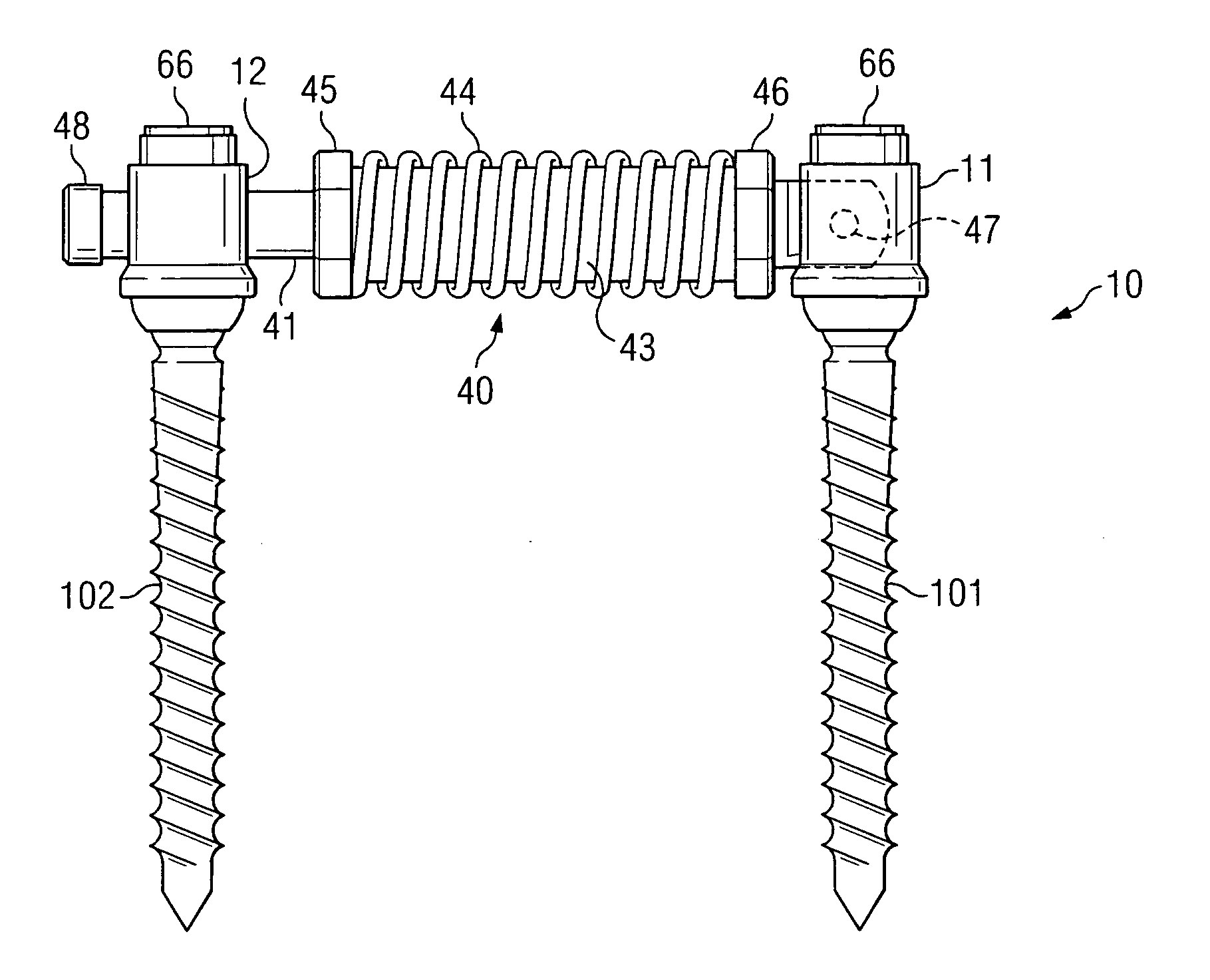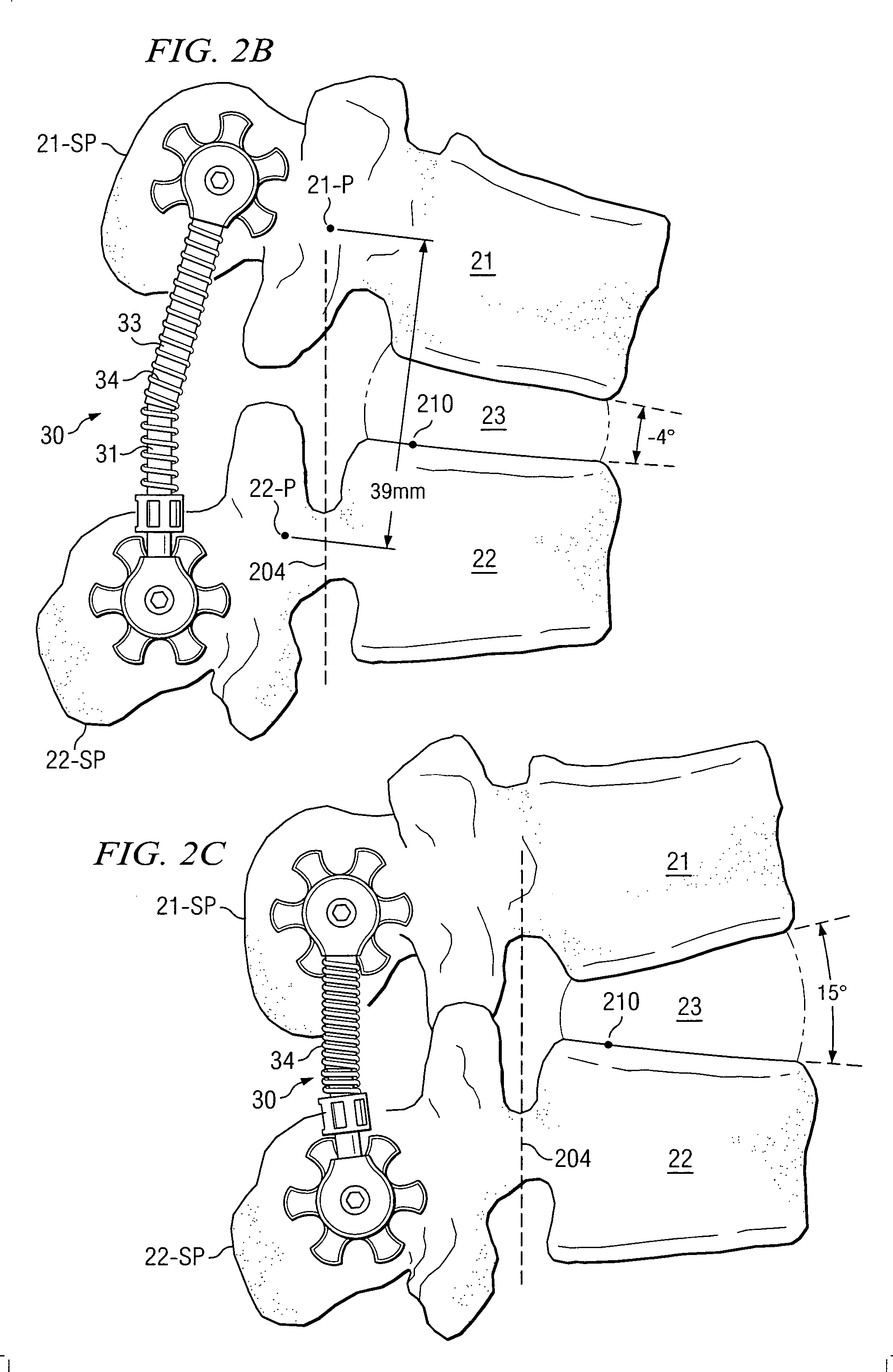System and method for dynamic skeletal stabilization
a dynamic and skeletal technology, applied in the field of skeletal stabilization, can solve the problems of limiting the patient's movement, further complications, and no provision for preventing or reducing disc compression, and achieve the effect of substantial range of motion
- Summary
- Abstract
- Description
- Claims
- Application Information
AI Technical Summary
Benefits of technology
Problems solved by technology
Method used
Image
Examples
Embodiment Construction
[0022]FIG. 1 shows dynamic brace (or “rod”) 40 positioned with respect to pedicle screws 101 and 102 in system 10. This is but one embodiment of the manner in which a dynamic stabilization device can be employed to partially off-load (or un-weight) the disc between vertebrae (to reduce compression forces) so that as the spine moves through its normal range of motion pressure on the disc is reduced throughout the entire range of motion. In this embodiment, the pedicle screws are positioned in the pedicles of the spine as discussed and shown in the above-identified co-pending U.S. Patent Application entitled “SYSTEM AND METHOD FOR STABILIZING INTERNAL STRUCTURES.”FIGS. 6A through 6F discussed below show in more detail how and where the pedicle screws are implanted for a dynamic brace in accordance with one procedure.
[0023] As will be discussed, one of the purposes of the dynamic brace is so that as adjacent pedicles move with respect to each other they are free to follow their natura...
PUM
 Login to View More
Login to View More Abstract
Description
Claims
Application Information
 Login to View More
Login to View More - R&D
- Intellectual Property
- Life Sciences
- Materials
- Tech Scout
- Unparalleled Data Quality
- Higher Quality Content
- 60% Fewer Hallucinations
Browse by: Latest US Patents, China's latest patents, Technical Efficacy Thesaurus, Application Domain, Technology Topic, Popular Technical Reports.
© 2025 PatSnap. All rights reserved.Legal|Privacy policy|Modern Slavery Act Transparency Statement|Sitemap|About US| Contact US: help@patsnap.com



